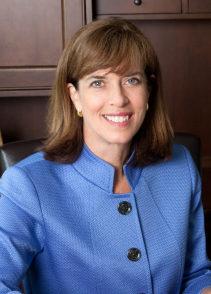
Congresswoman Katherine Clark
Congresswoman Katherine Clark recently made a special visit to Watertown’s Cunniff Elementary School to see a new program where special education and mainstream students work together in the same class.
The inclusion class at the Cunniff, which started this fall, allows special education students to spend more time in with their classmates, and in some cases mean they do not have to go to specialized programs located outside of Watertown.
In her latest email update, Clark references her visit to Watertown.
“I had a great visit with students and teachers at Cunniff Elementary School in Watertown,” Clark’s email reads. “Cunniff’s mission is to provide a supportive and challenging learning environment to maximize academic achievement, social responsibility and lifelong learning by attending to the intellectual and developmental needs of all of our students.”
Last month, Special Education Director Brian Rachmaciej told the School Committee about the program.
“The program is designed to support the students, their family and the community,” Rachmaciej said. “And they don not have to travel three hours out of the community.”
The fourth-grade class is smaller than most, with 12 students – 40 percent of whom are special education – and it has a teacher, Zane Walsh, with dual certification in elementary and special education, along with two instructional aides.
One worry about inclusion classes, Rachmaciej said, is that students will not receive as good an education as those in a regular classroom.
“Inclusion does not mean less rigor,” Rachmaciej said. “People often ask when you have an inclusion class hot is the vigor?”
The program uses a lot of hands-on, project-based learning, he added.
“Each child is an individual. It is not a cookie-cutter approach,” Rachmaciej said.
Cunniff Principal Mena Ciarlone said she had some doubts before the program started.
“When we first had the discussion about inclusion I didn’t know how it would work,” Ciarlone said. “I think it is a wonderful addition to the school.”
Along with the educational aspects of the inclusion program, Rachmaciej said, is how students learn to work with students of all kinds. One of to goals is to create an atmosphere where “students care about each other,” he said.
Parents of special education students said their children feel connected to the school and their classmates more than ever.
“A parents said, ‘for the first time my child is out of bed ready to got to school,’ and ‘for the first time we can have a birthday and the entire class will be there,'” Rachmaciej said. “And they said, ‘for the first time I can reach out and I know I will be heard.'”
Ciarlone said the class has been popular at the school, and she has even had parents tell her they wish their child was in the inclusion class.
“I see wonderful things taking place in that classroom on a daily basis,” Ciarlone said.
The class could become a model for classes around the district, Rachmaciej said.